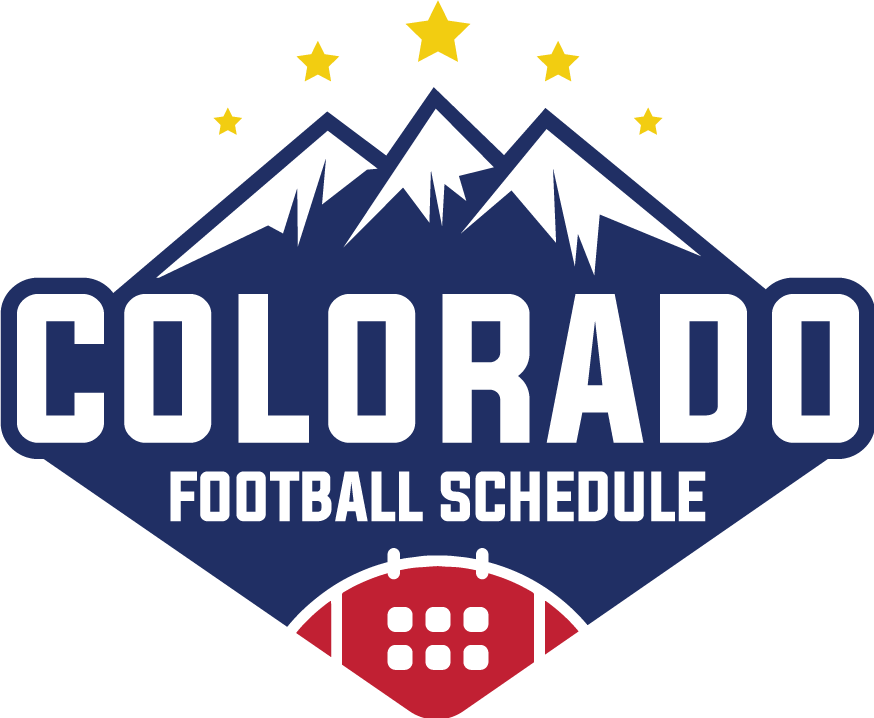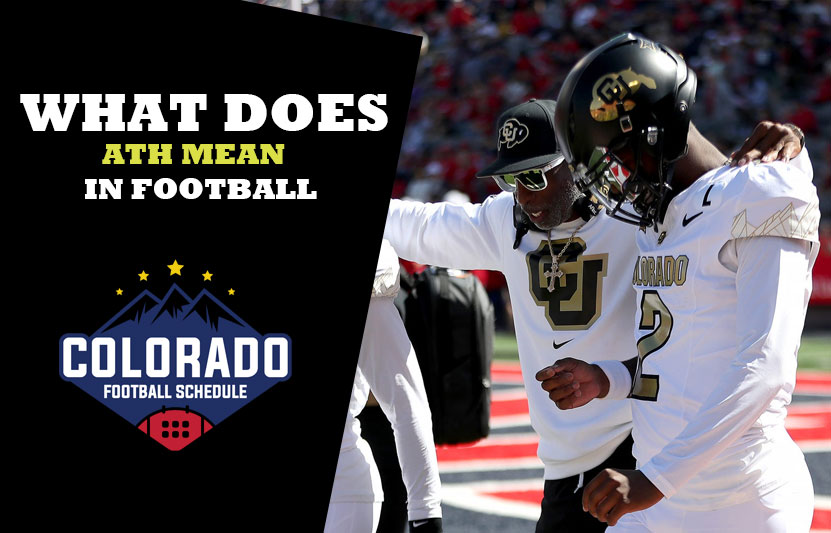If you’ve scrolled down a high school roster, college recruiting page, or social post on a prospect and noticed the designation “ATH,” you may ask yourself what exactly it means.
Here’s the simple answer: ATH stands for “athlete.” In American football, it’s an elastic label for guys who can do a lot of things and don’t yet have a fixed, set position. It’s the sport’s way of saying, “This guy is versatile.
Below is a friendly, no-fuss guide that explains where you’ll see ATH, why coaches like it, what it says about a player’s skills, and how an ATH eventually finds a home at one spot on the field.
The Short Version
- ATH = Athlete.
- It shows up most often in high school and college recruiting.
- It means the player can line up in several places and help in many ways.
- As the player develops, coaches decide the best long-term position.
Where You’ll See “ATH”
1) Recruiting websites and rankings
When scouting services grade high school players, they list a “primary position.” But some prospects are so adaptable that putting them in a single bucket too early would be misleading. So they get “ATH.” Colleges love this because it signals a player they can shape to fit their system.
2) High school team rosters
Lots of talented kids play offense, defense, and special teams. A roster may employ “ATH” to indicate that a student plays everywhere on the field: at receiver, running back, defensive back, returner—where the team needs a burst.
3) Social media and local coverage
You’ll see coaches or reporters describing a star as an “ATH” when that player fills multiple roles. It’s a shorthand way to praise versatile talent.
Why Coaches Use the ATH Label
Flexibility: Football is a game of moving puzzles. Injuries, matchups, and the week’s game plan can push a coach to shift players around. An ATH gives the staff more choices.
Projection: At 16 or 17, a student might still be growing, getting stronger, and learning the finer points of the game. Calling someone an ATH lets coaches keep options open while the player’s body and skills settle.
Scheme fit: College schemes differ a lot. One program might see a future star running back; another might see a lockdown safety. “ATH” says, “Bring him in, and we’ll figure out the best fit here.”
What Being an ATH Usually Looks Like on the Field
An ATH often:
- Touches the ball on offense in space—jet sweeps, quick passes, screen plays, handoffs—anything that lets them make defenders miss.
- Covers and tackles on defense—a cornerback or a safety is common because speed and tackling carry over well.
- Helps on special teams—kick or punt returns, coverage units, or even holding or gunning.
Coaches look for ways to give an ATH the ball or point an ATH at the ball. The goal is simple: get a high-impact player involved in many moments.
Strengths That “ATH” Quietly Signals
Speed: They can run. Maybe not always track-star fast, but fast enough to change a play.
Agility and balance: The smooth, quick feet that help with cuts, pursuit, and tackle breaks.
Ball skills: Catching, tracking deep throws, securing interceptions—good hands and timing.
Tackling and toughness: On defense or special teams, an ATH is often asked to hit, wrap, and finish plays.
Football instincts: The knack for reading space, reacting quickly, and making the right move under pressure.
How an ATH Becomes a “Position” Player
The ATH tag isn’t permanent. Over time, coaches narrow things down.
1) Frame and growth pattern
As a player’s body matures, the likely spot becomes clearer. A growing frame may suggest linebacker or tight end; a leaner build with top-end speed might suggest receiver or cornerback.
2) Skill development
Refined route running and catching point toward the receiver. Polished backpedal and coverage awareness point toward the defensive back. Strong vision behind blocks suggests running back.
3) Team needs and scheme
A college that loves power running might move an ATH to safety or running back. A spread offense might prefer that same player at slot receiver.
4) Player preference
Some athletes love offense; others love defense. Confidence and comfort matter.
Most ATH prospects settle into a main role during their first year or two in college, sometimes even late in high school.
Common Future Homes for ATH Prospects
- Cornerback (CB): For the speediest ATHs with ball skills and reaction.
- Safety (S): For speed combined with tackling and awareness.
- Wide Receiver (WR): For players who possess burst, hands, and open-field wiggle.
- Running Back (RB): For powerful runners with vision and balance.
- Linebacker (LB): For thicker-framed ATHs who hit and track the ball.
- Tight End (TE): For taller ATHs who can block and catch.
- Return Specialist: For anyone with great vision and acceleration.
Why the ATH Label Helps Recruiters and Fans
It prevents mislabeling: Calling a two-way high school star only a “receiver” or only a “corner” can hide what makes them special. “ATH” protects against that.
It invites creativity: Coaches can design packages to use the player’s strengths right away, even before a final position is chosen.
It reduces pressure: Young players don’t necessarily have to be stuck on one course before they’re ready.
The Upside and the Trade-Offs
Upside
- More chances to get on the field early. If the offense is crowded, an ATH can help on defense or special teams.
- Broader football education. Learning different roles builds game sense.
- Higher ceiling. Once a position clicks, all that broad experience pays off.
Trade-Offs
- Less early specialization. Splitting time can slow down the polishing of one position’s finer points.
- Uncertainty. Not knowing your exact role can be tough until a spot is set.
Coaches try to balance both, giving the player enough variety to help the team while steadily building toward a single home position.
How Scouts Evaluate an ATH
When scouts break down film or live action, they focus on traits that travel from role to role:
- Burst and top speed (acceleration to open-field speed)
- Short-area quickness (first three steps, change of direction)
- Body control (staying balanced through contact)
- Hands and tracking (adjusting to the ball, securing catches)
- Tackling (angles, wrap, drive)
- Vision (seeing seams on offense, pursuit lanes on defense)
- Competitiveness (effort, toughness, resilience)
Stats matter, but context matters more for ATHs. A player taking snaps at four different roles won’t have the same eye-popping numbers at one spot as a specialist. Scouts weigh the total picture.
What If You’re a Parent or Player Labeled ATH?
Lean into the versatility: Say yes to jobs that take advantage of your strengths. The more you can excel, the quicker coaches will trust you.
Keep fundamentals first: Addressing form, ball handling, catching skill, footwork—these never fade and apply to any position.
Train smart, not only hard: Mobility, core strength, and sprint work benefit you everywhere. If you’re lifting, focus on good form and balanced development.
Talk with your coaches: Share what roles you enjoy and where you feel yourself improving most. That helps the staff guide you toward a long-term spot.
Build a film that shows variety: Clips at receiver, clips at DB, clips on returns—show that you can help right now in several ways.
Myths About the ATH Label—And the Truth
Myth: ATH means the player isn’t good at any one thing.
Truth: It usually means the player is good at several things and still growing into a final spot.
Myth: ATH is only for smaller, speedy players.
Truth: Plenty of bigger prospects get the tag, especially those who could become linebackers, tight ends, or safeties.
Myth: ATH is a recruiting trick to hype a player.
Truth: It’s practical. It tells colleges, “Here’s a dynamic player you can shape to your scheme.”
Myth: ATHs always end up on offense.
Truth: Many turn into standout defensive backs or linebackers. The best fit wins.
How to Watch a Game and Spot an ATH
If you’re at a high school game or watching a stream, here’s what to look for:
- Same name in many roles. You notice #4 lining up at receiver, taking a handoff the next series, then playing cornerback.
- Special teams impact. That same player returns punts or kicks and covers kicks well.
- Coach usage in key moments. In big spots—third downs, red zone, late-game drives—the player is on the field no matter which side has the ball.
- All-around traits. Quick first step, solid tackling, reliable hands, and constant involvement in important plays.
If that sounds like someone on your local team, you’re probably watching an ATH.
Is “ATH” Used in Soccer-Style Football?
In most parts of the world, “football” means soccer. The ATH label isn’t a standard tag there. You may see the term “utility player,” referring to an individual who can play a lot of different roles, but it isn’t the same roster shorthand applied in American football recruiting. So if you find “ATH” listed next to a player’s name, chances are good that you’re viewing American football content.
Examples of Ways Coaches May Use an ATH (Without Heavy Terminology)
On offense
- Quick passes to the flat to let them run past a defender
- Hand-offs on end-arounds to use their speed
- Mismatches in space—line them up in the slot against a slower defender
On defense
- Covering the other team’s fastest receiver
- Playing a deep zone and reading the quarterback’s eyes for a pick
- Setting the edge on runs and making solid tackles
On special teams
- Returning kicks to flip field position
- Running as a “gunner” on punts to force fair catches
- Blocking on return units thanks to speed and toughness
Each role uses the same core traits: speed, balance, awareness, and effort.
What ATH Tells You About a Team
If a roster lists a handful of ATHs, it often means the coaching staff values player development and creativity. They’re building a lineup around talent and teaching, not just slotting kids into rigid boxes. That can be exciting for fans because it usually leads to fun plays and steady growth.
A Simple Checklist: Is This Player an ATH?
Ask these quick questions:
- Does the player contribute on offense, defense, and special teams?
- Do the coaches find a way to get the ball in their hands or trust them to go get the ball on defense?
- Does the player show speed, agility, and toughness across roles?
- Do recruiting pages or local write-ups avoid naming one position and use ATH instead?
If most answers are “yes,” you’re likely looking at an ATH.
Final Takeaway
“ATH” in football is not a throwaway label. It’s a badge of range and promise. It tells you a player can help right now in several ways and has the raw tools to grow into a clear role later. If you see ATH next to a name, expect a do-it-all type who pops up all over the field. And if that player keeps building core skills—speed, balance, ball handling, tackling—the day will come when coaches say, “This is your spot,” and the tag will quietly turn into a specific position title.


Leave a Reply